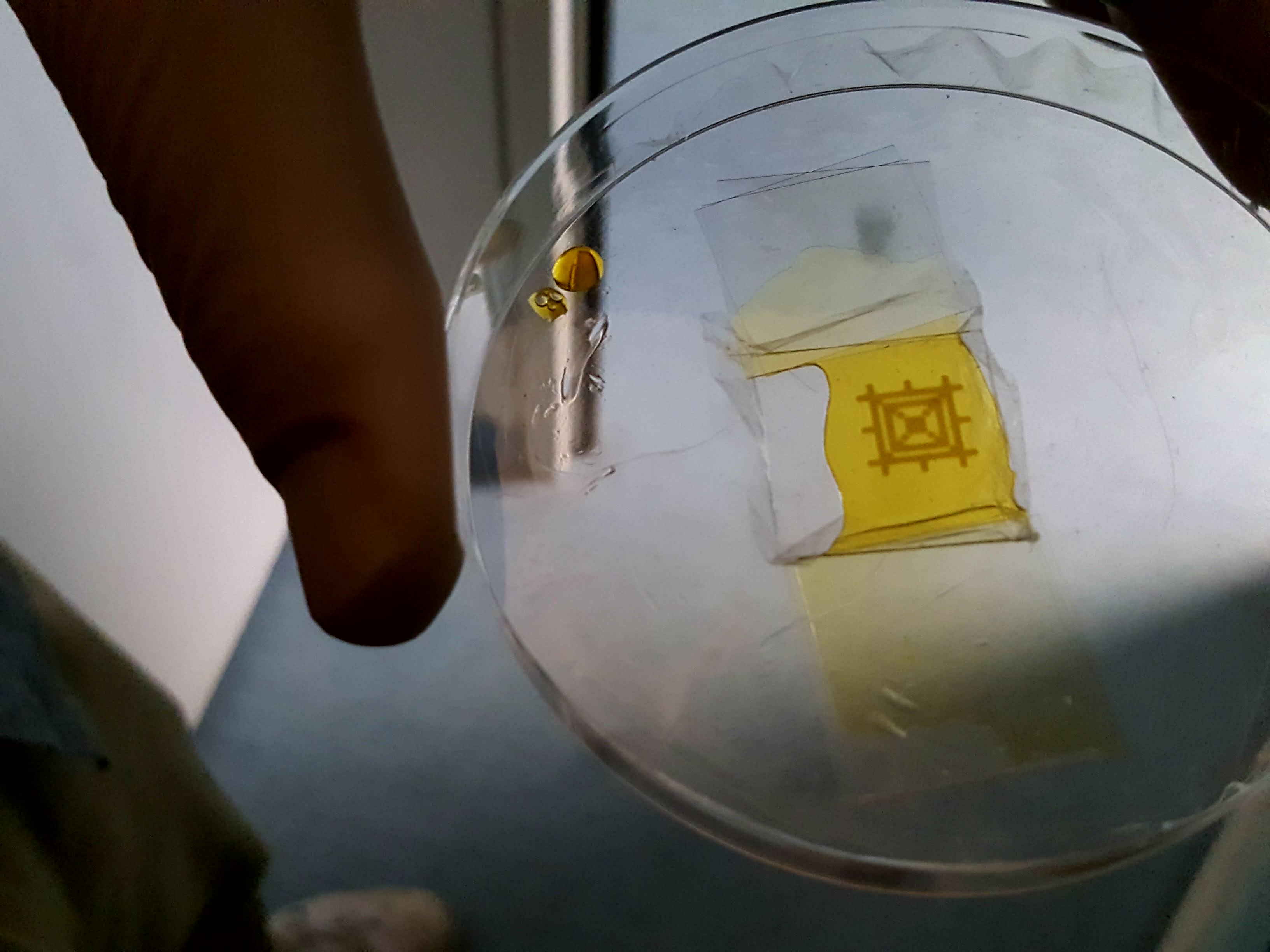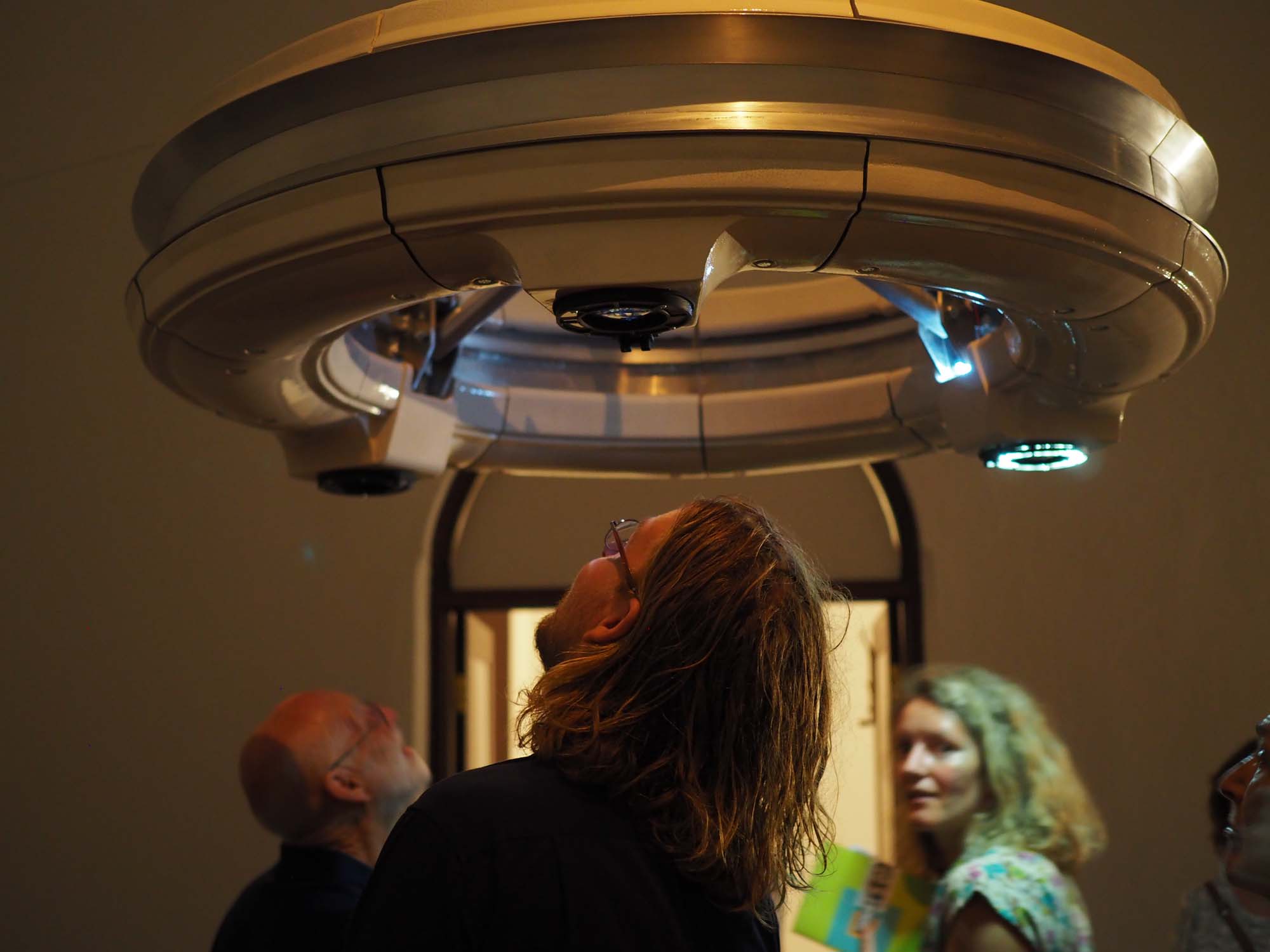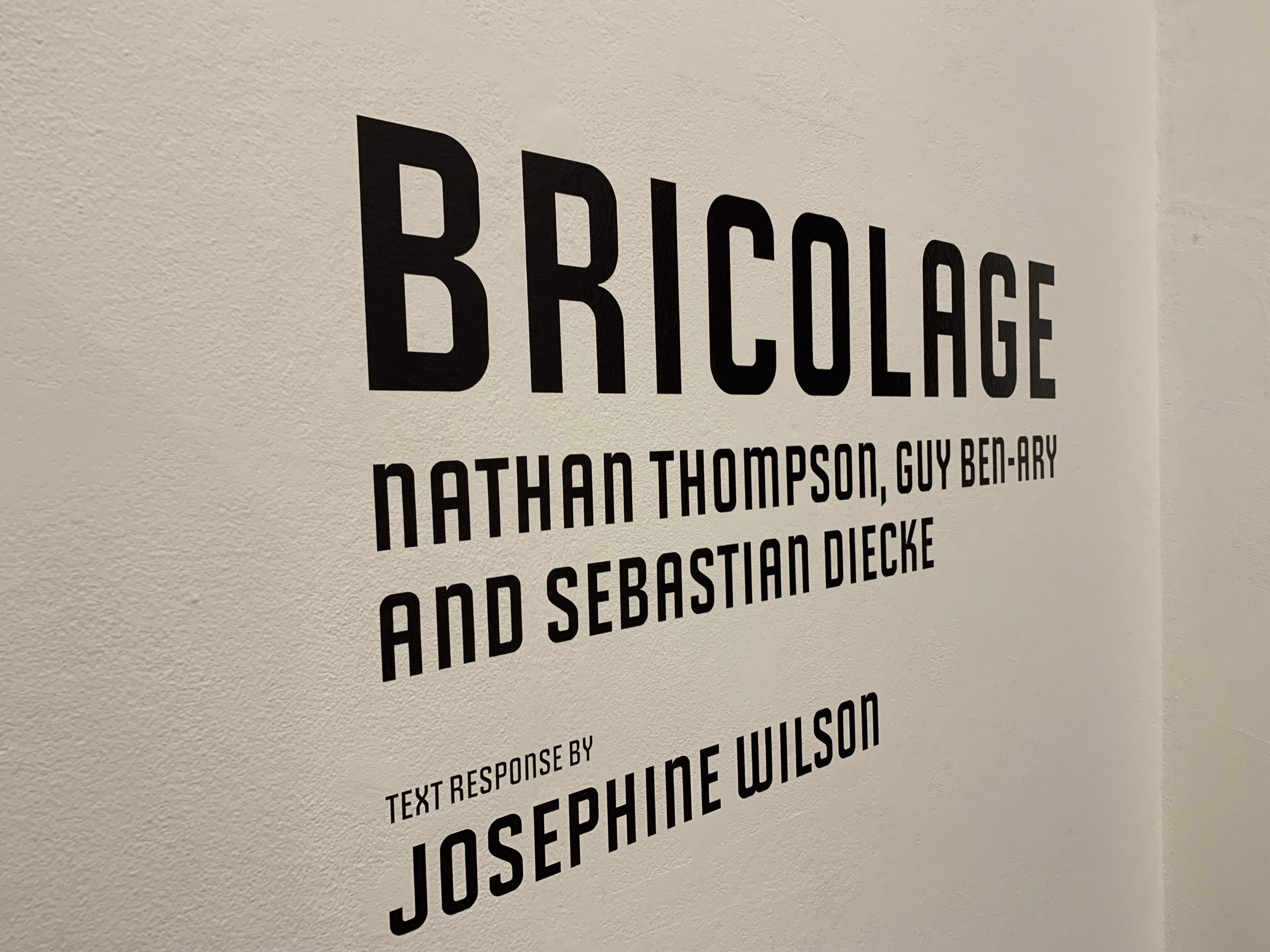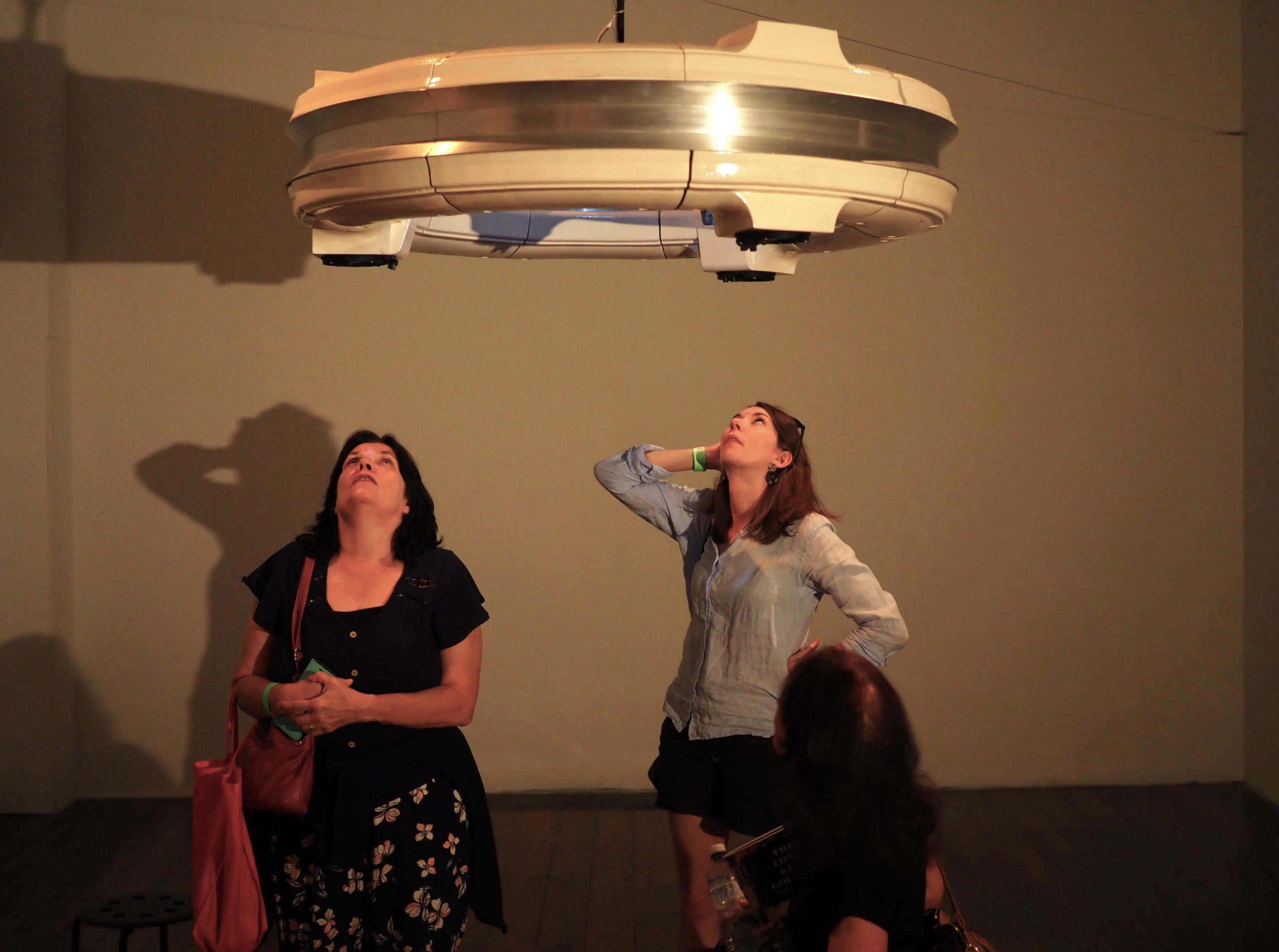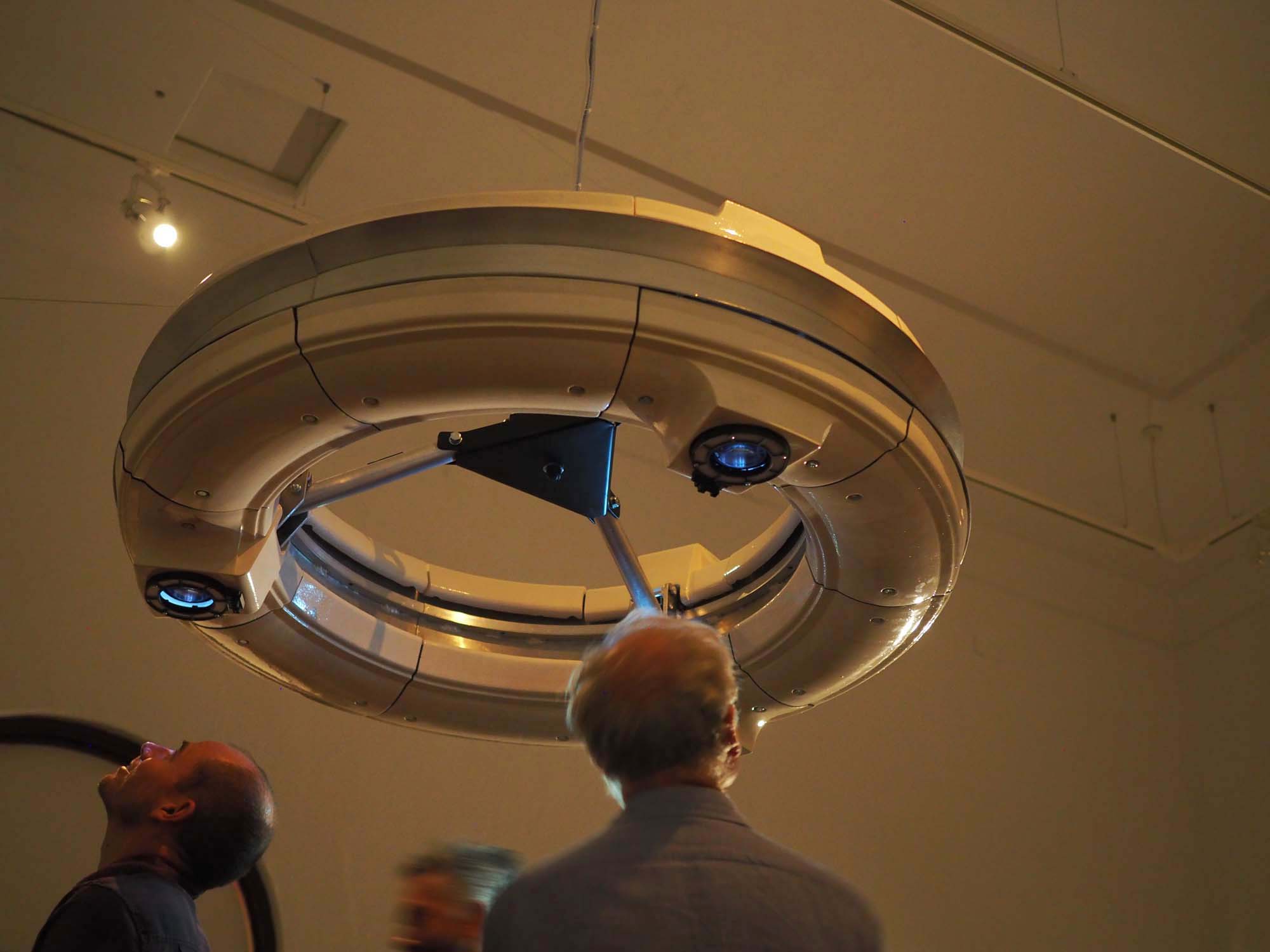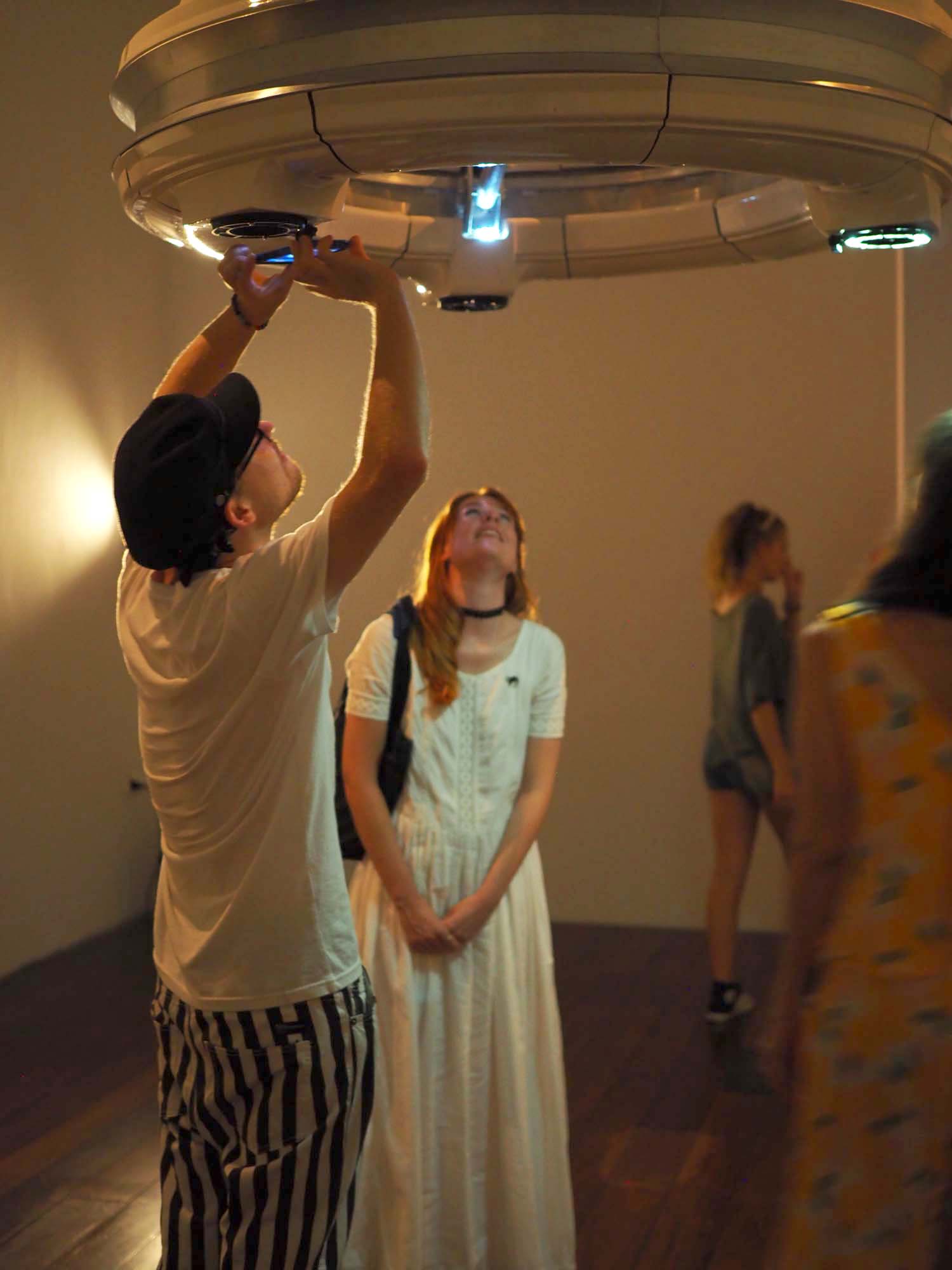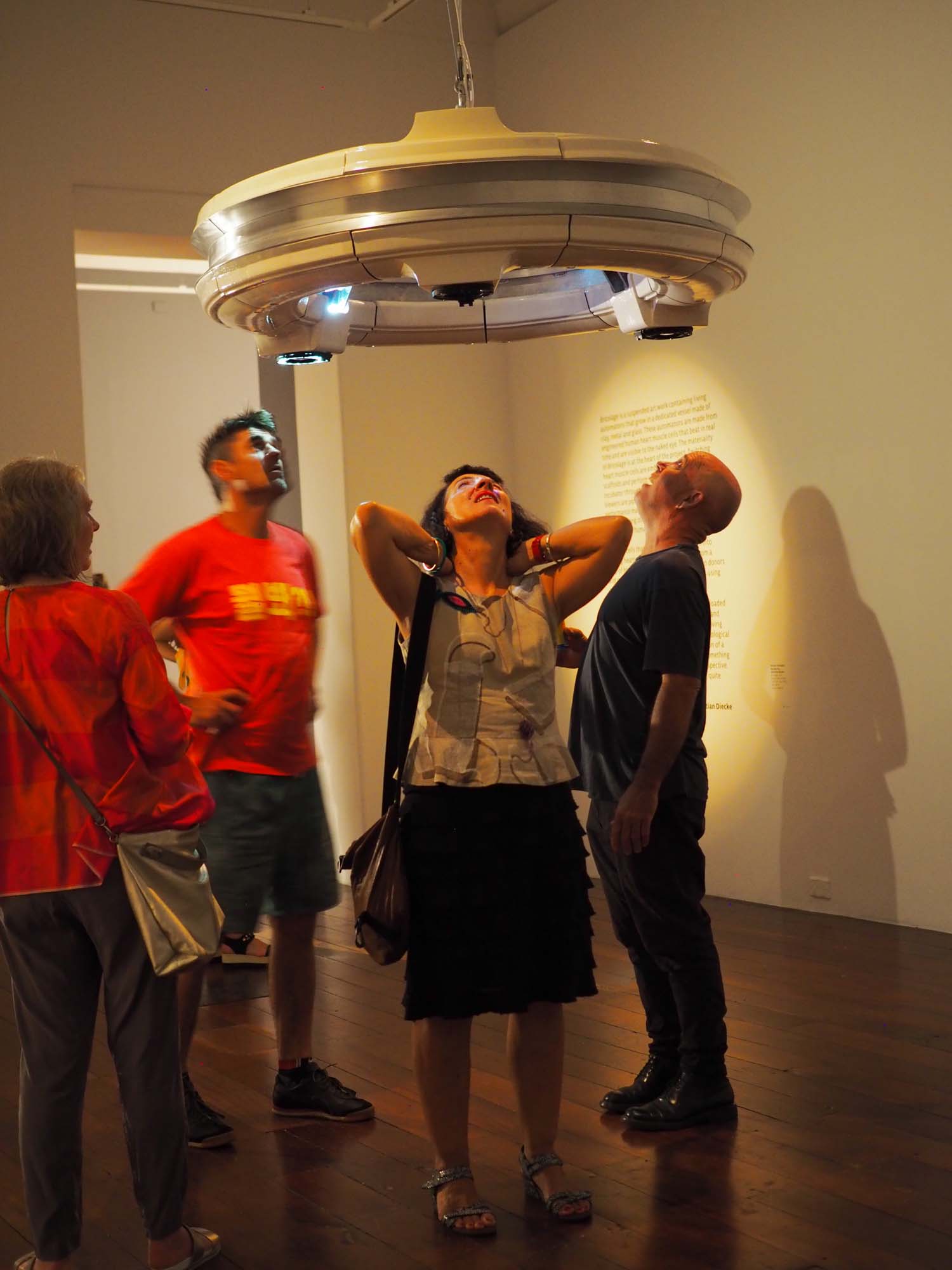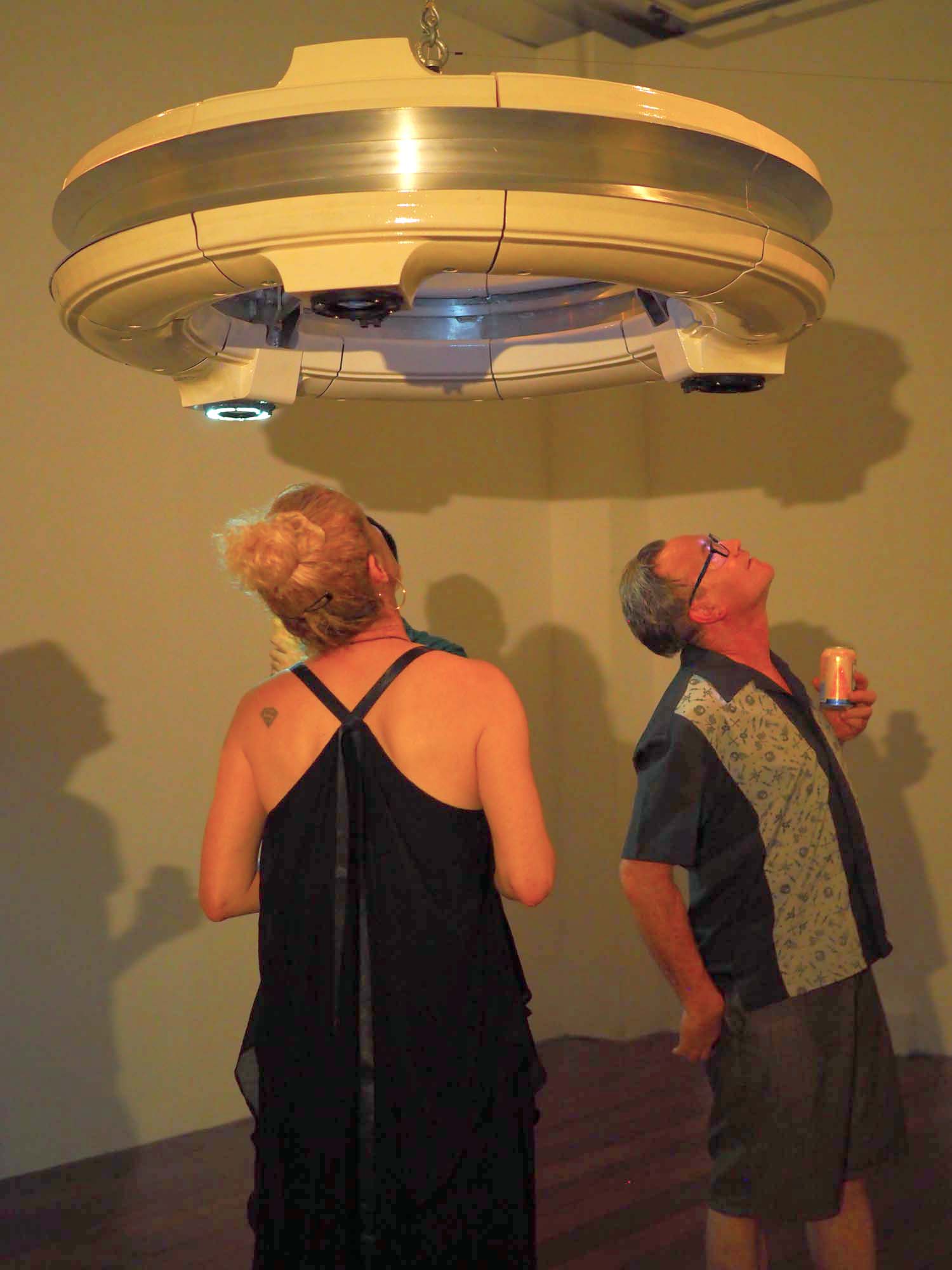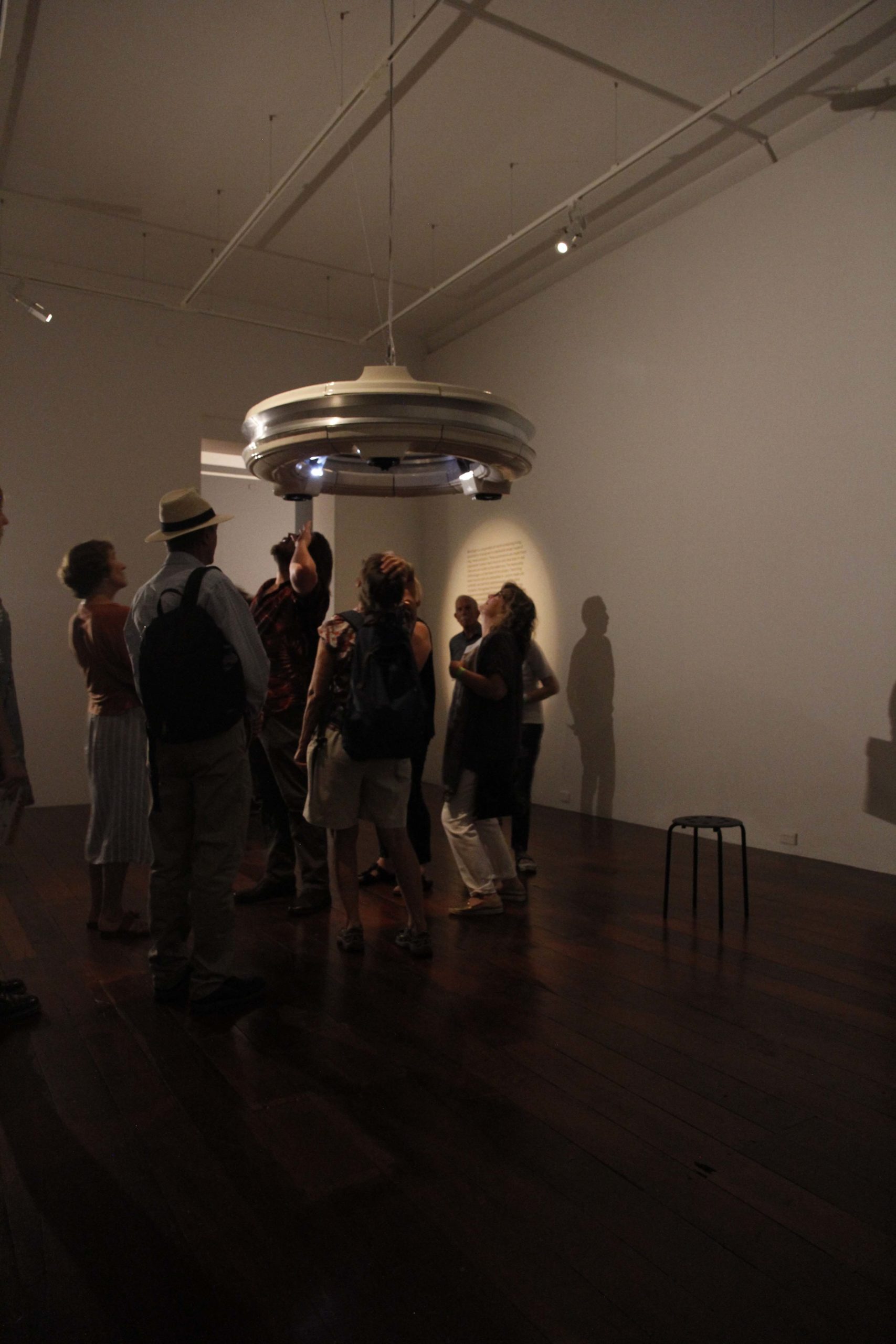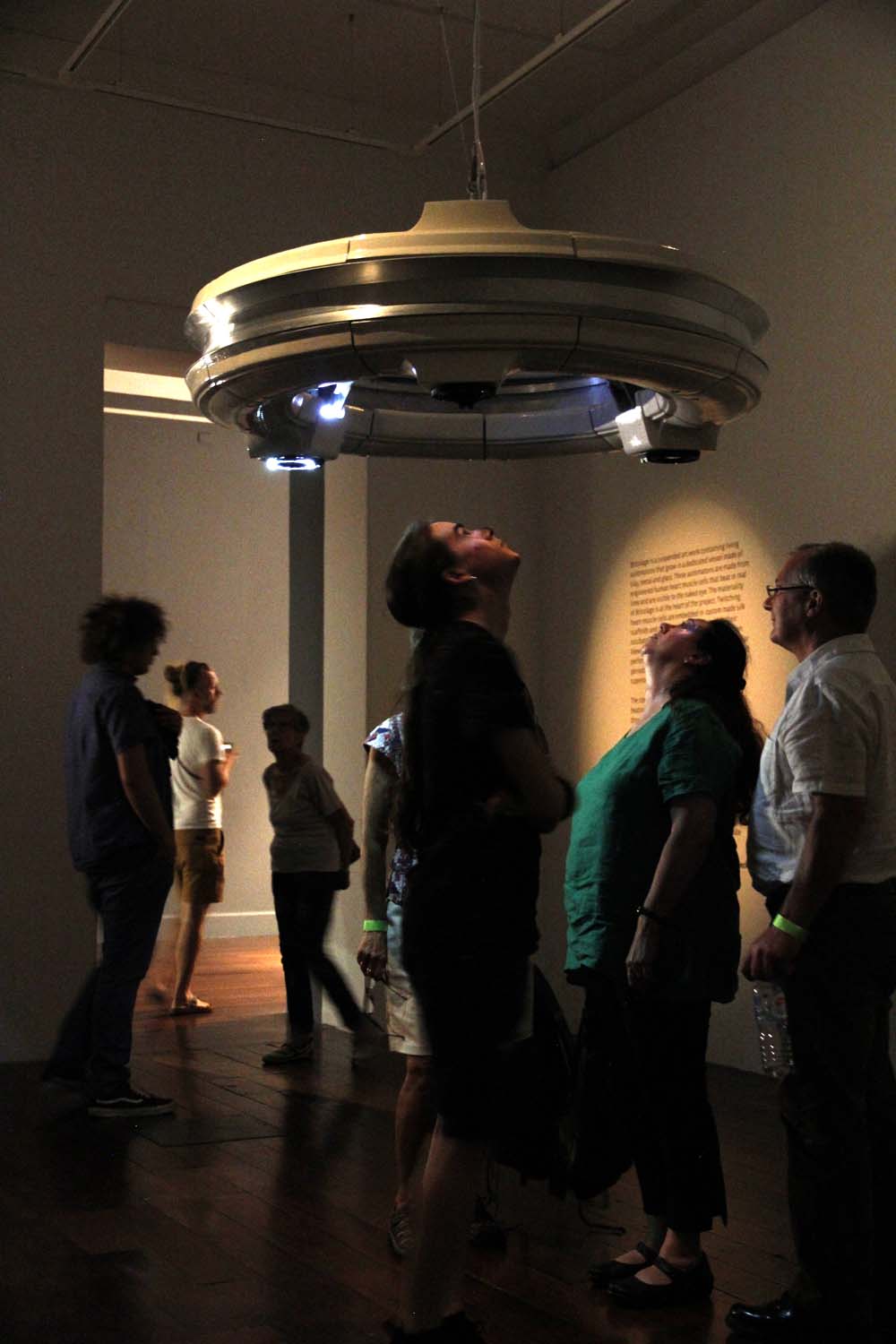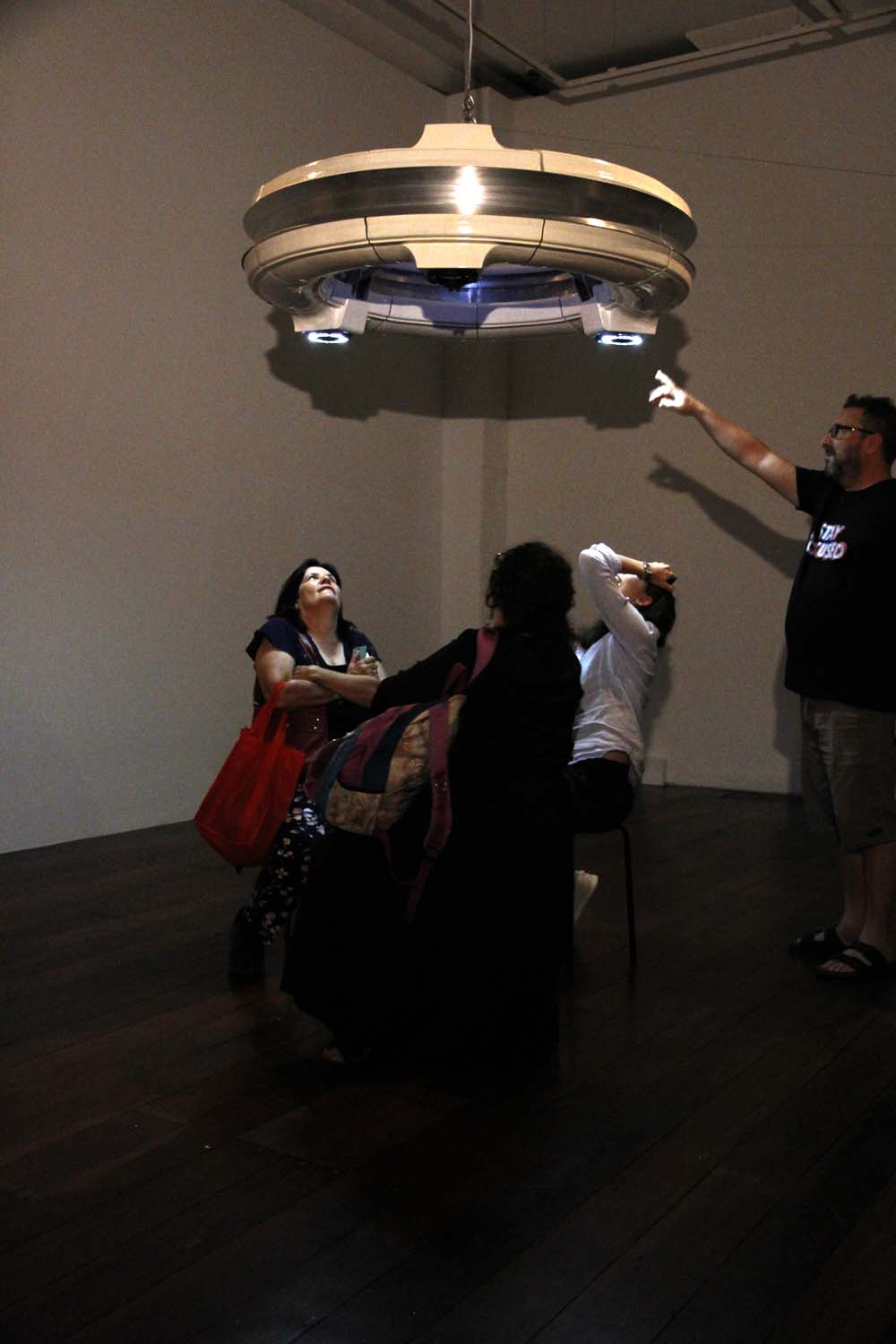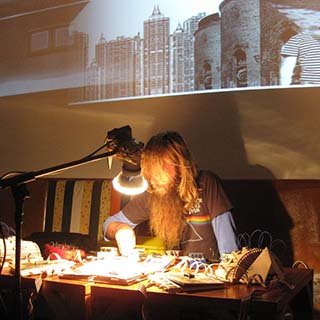About Bricolage
Credit for Bricolage goes to Nathan Thompson, Guy Ben-Ary and Sebastian Diecke
In Bricolage, we create autonomous, animated, living, biological entities that have the ability to self-assemble and are hosted in a suspended vessel (Incubator) custom made of clay, metal and glass. These living automatons, or living kinetic sculptures, are derived from three main materials: blood, heart and silk.
Bio-engineered human heart muscle cells are grown over custom printed silk scaffolds that beat in real time, manipulating the automatons’ movement, which at times self-assemble to create a larger structure visible to the naked eye of gallery attendees.
The cellular performance continues spontaneously throughout the duration of the exhibition. Viewers are positioned submissively under the vessel that hosts the automatons making it a challenge to view for extended periods, among other things, questioning the so-called superiority of humans over non-human entities.
The automatons have a strong physical presence in the gallery. They can be seen with the naked eye – a new experience for audiences engaging with cellular artworks. Bricolage is unique in its independence from microscopes, projections or any other technological mediation and instead of experiencing it via layers of technology, viewers peer up through the windows of a custom made clay incubator.
Bricolage is a ‘surrogate performer’. Surrogate to its anonymous donors. Performer, a series of alchemical transformations resulting in a self-assembling twitching automaton.
This cellular performance seem alien and uncanny. Through its alien-ness, Bricolage creates a “shock,” in the audience, as their existing cognitive models of aliveness cannot be applied to this fragmented life. Its alien animacy encourages the viewers to re-evaluate categories of life and aliveness.
The stem cells used to make beating heart muscle cells have originated from a drop of blood. The blood cells were reprogrammed to become stem cells using cutting edge technology and then transformed into twitching cardio myocytes or heart muscle cells. The scaffold or body over which we grow the muscle cells are made of silk for one because of its inherent cultural associations but also because of its widespread use as a biomaterial. These are our living automatons.
The biological sorcery, or alchemy, that enables the conversion of a drop of blood into a living animated entity is something that needs to be explored from a cultural perspective. This is an intriguing, challenging and frankly, quite disturbing prospect.
Bricolage is designed to allow exhibiting the automatons in an elegant, coherent and articulate way, and as an alternative many bioart works that are generally packed in lab incubators and lab aesthetics.
By the conscious use of specific materials and processes, Bricolage paves a narrative that disrupts and pulls apart embedded definitions in order for us to build a more thorough and inclusive dialogue to the objects and entities that surround us. Material choice such as clay, silk and glass situates the work within ancient traditions while novel uses of cutting edge bio-engineering processes posit scenarios of what is now possible and what indeed could come in the years ahead. Bricolage is an artefact sent back to us from our potential future.
Bricolage’s alienness requires a restructuring and re-culturing. How do we conceptualise the living-animate but non-sentient-biological, man-made entities into our understanding of life, consciousness and agency? And how do we usher in dialogue to build a greater vocabulary in order to tackle the issues that will arise as a result of this progress?
Bricolages automatons are vital, ever changing and alive. They explore the conceptual and practical relationships between life and perceptions of vitality, whilst at the same time confront the viewer with their visceral performative presence.
Bricolage in Perth International Art Festival
Process
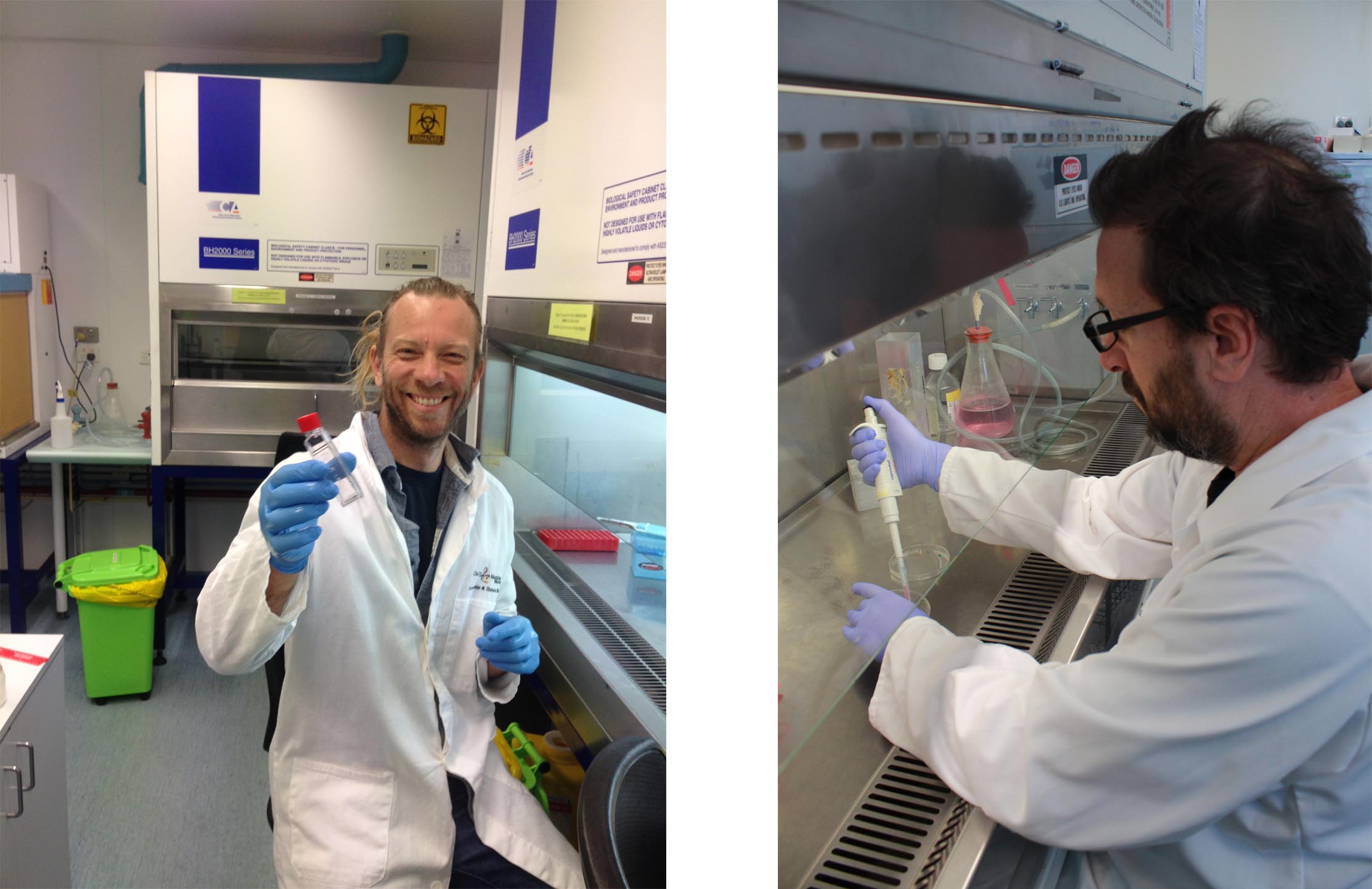
Stem cells growing in tissue culture conditions
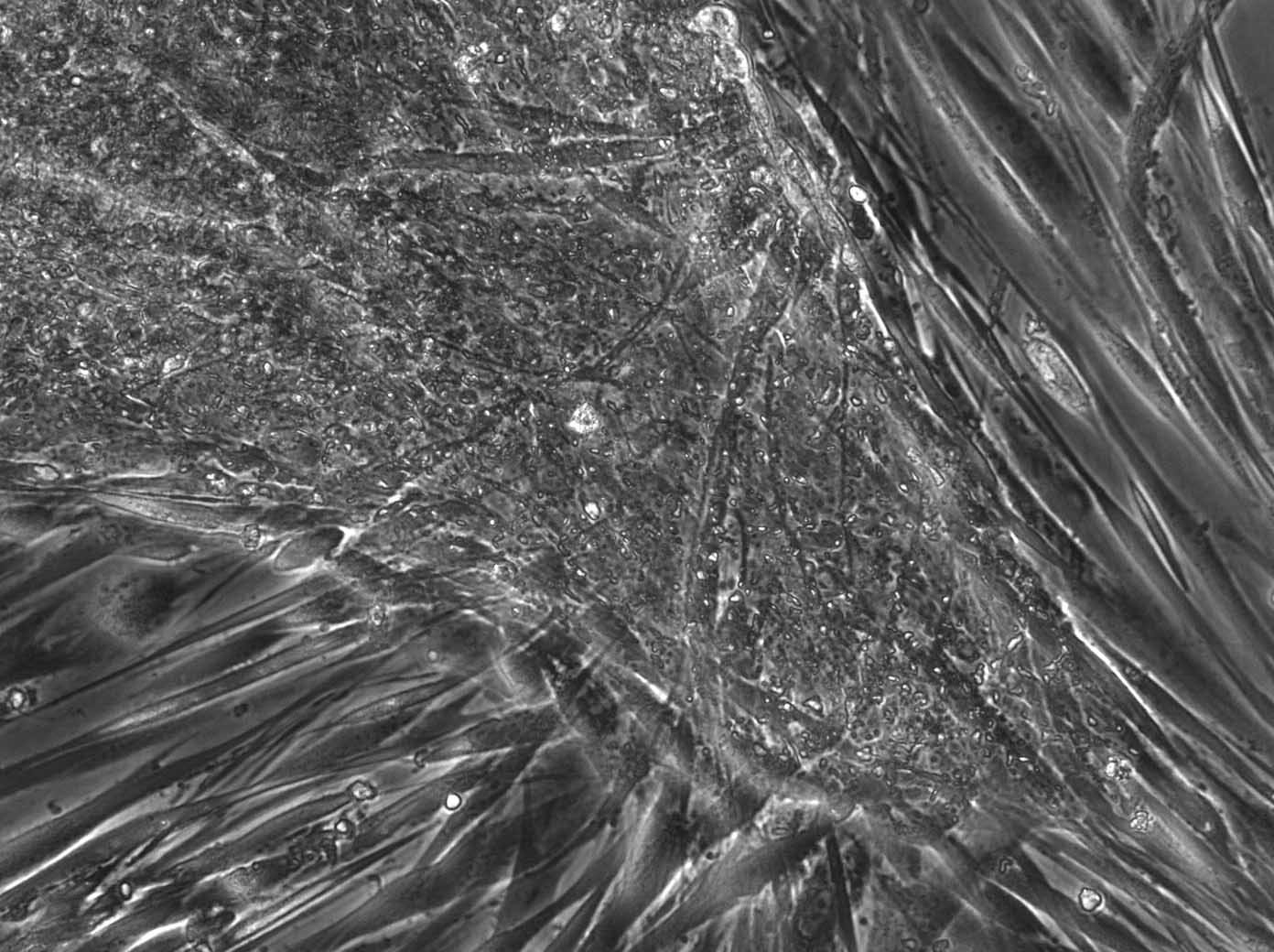
Heart Muscle Cells beating/twitching in a Petri dish.
The following movie was taken in real time. It demonstrates the incredible properties of the heart muscle cells and their potential to be used as bio-motors or actuators.
Movie 1
Bodies made of silk
The process of printing silk with light on a motorized microscope is unique. The innovative printing process we developed uses aqueous silk, that is treated with a photosensitive compound inducing hardening when exposed to light, thus the tiny light beam from the microscope is momentarily shone onto the silk in the pattern I have designed on screen, then what results is a silk structure ready for seeding with twitching cells.
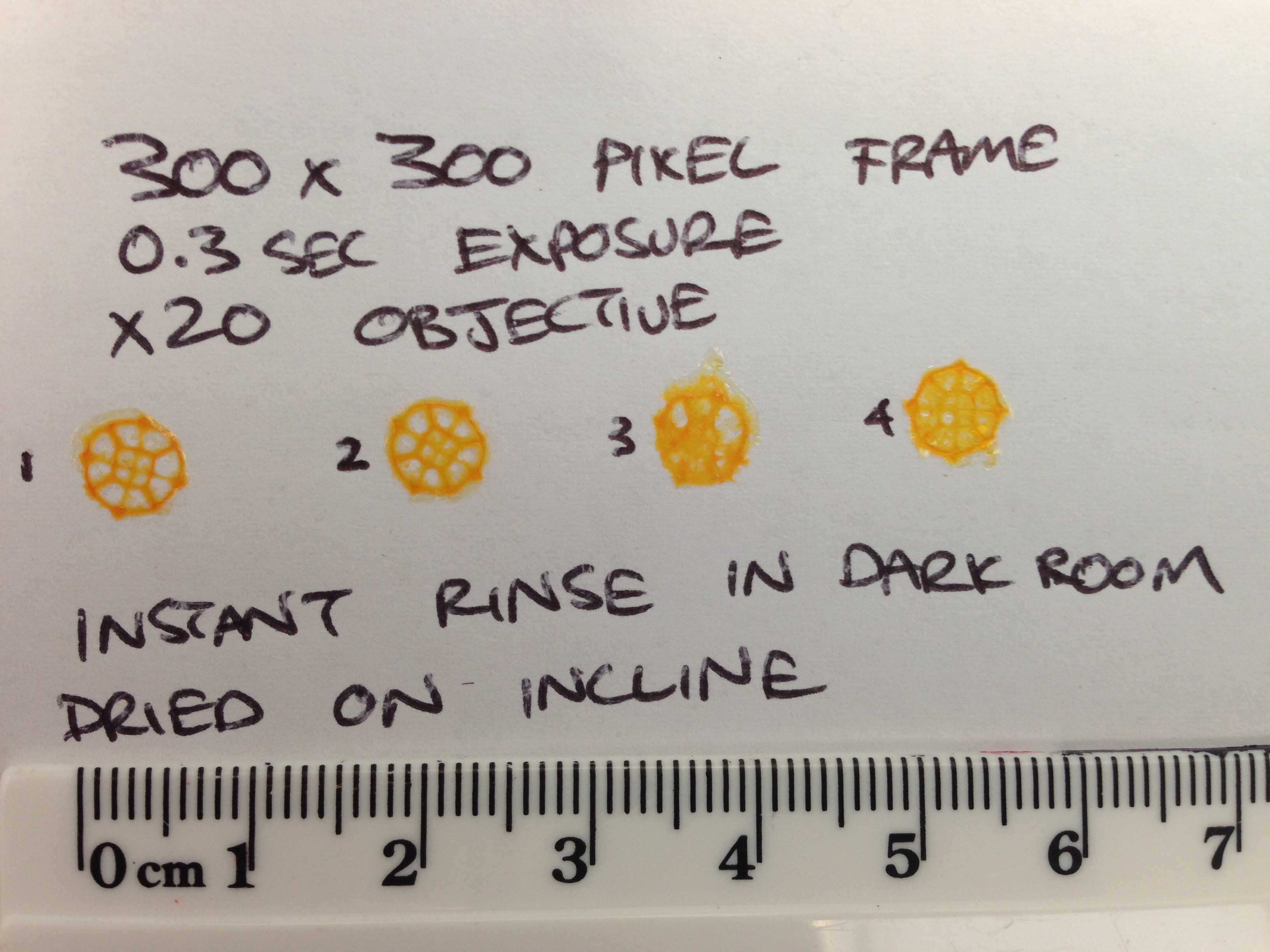

The Biological Alchemy and the Materiality of the work
The video below shows 2 sets of materials we are working with. On the left hand side a drop of blood falling on sheets made of silk. The video on the right demonstrates what happens to these materials after applying Biological Alchemy. layers of heart cells twitching and banding a printed silk scaffold to create our Bio-robots.
We believe that the biological sorcery, or alchemy, that enables the conversion of a drop of blood into a living animated entity is something that needs to be explored from a cultural perspective. This is an intriguing, challenging and frankly, quite disturbing prospect.
Bricolage Prototypes –
Biological Robotic Entities
These videos shows our bio-robotic prototypes. They are approximately 7mm square. An achievement that to our knowledge was never done before in an art context. We work on increasing their size and their self assembly module to create 2-3 cm square robotic entities.
Collaborator
Nathan Thompson is a multi-disciplinary artist exploring the possibilities of man/machine interaction and the hidden corners that arise from this relationship. Mostly he implements machine/robots that play along the blurred edge of the interactive while showing independent thought, only slightly tethered to the audiences actions. His work often questions the role of humans in the natural landscape and through these investigations, builds a greater understanding of our inhabited space. His machines are self built, analogue and lifelike in their behavior, using custom electronic Neural-type networks that are on their own, very simple but when piggybacked, multiplied and fed back into the stream, display behavior remarkably organic. The interpretations of this evolving machine language lead to an installation unique to every setting… the participant, oftentimes, both controls and is controlled by the mechanics of these unique lifelike constructions.

Sebastian is working as a head of the Pluripotent Stem cell Platform at the Max Delbrück Center in Berlin. The institute is focusing on molecular mechanisms of diseases and developmental processes in general. He is providing services around reprogramming, differentiation in different tissue types and genetic manipulation of the pluripotent cells for the researchers of the institute. His research is focusing on generating clinical grade induced pluripotent stem cells and how to apply stem cell technologies to potentially rescue highly endangered animals like northern white rhinoceros (NWR). In particular he is generating induced pluripotent cells from these animals and try to differentiate them towards germs cells using a similar approach like published for mice.
 Callum Siegmund[/caption]
Callum Siegmund[/caption]
Callum Siegmund is an emerging bio/nano artist who, since 2020, has been a resident at SymbioticA developing his practice of DNA sculpture; wherein different techniques from DNA nanotechnology are utilized to sculpt DNA into objects with poetics embedded in their form and sequence.
Prior to 2020, his research was focused on optimizing tissue engineered skeletal muscle actuators for use in bio-robotic systems; leading him to assist Guy and Nathan in developing bio-robotic protocols for Bricolage.


